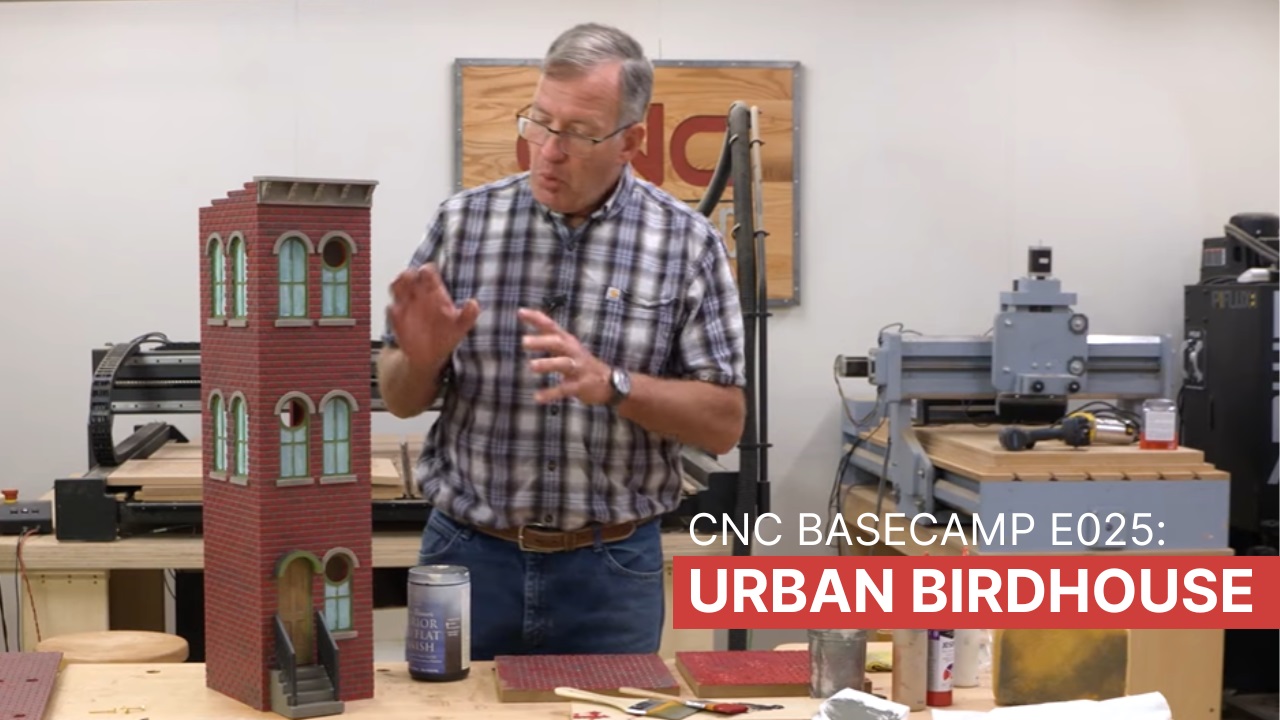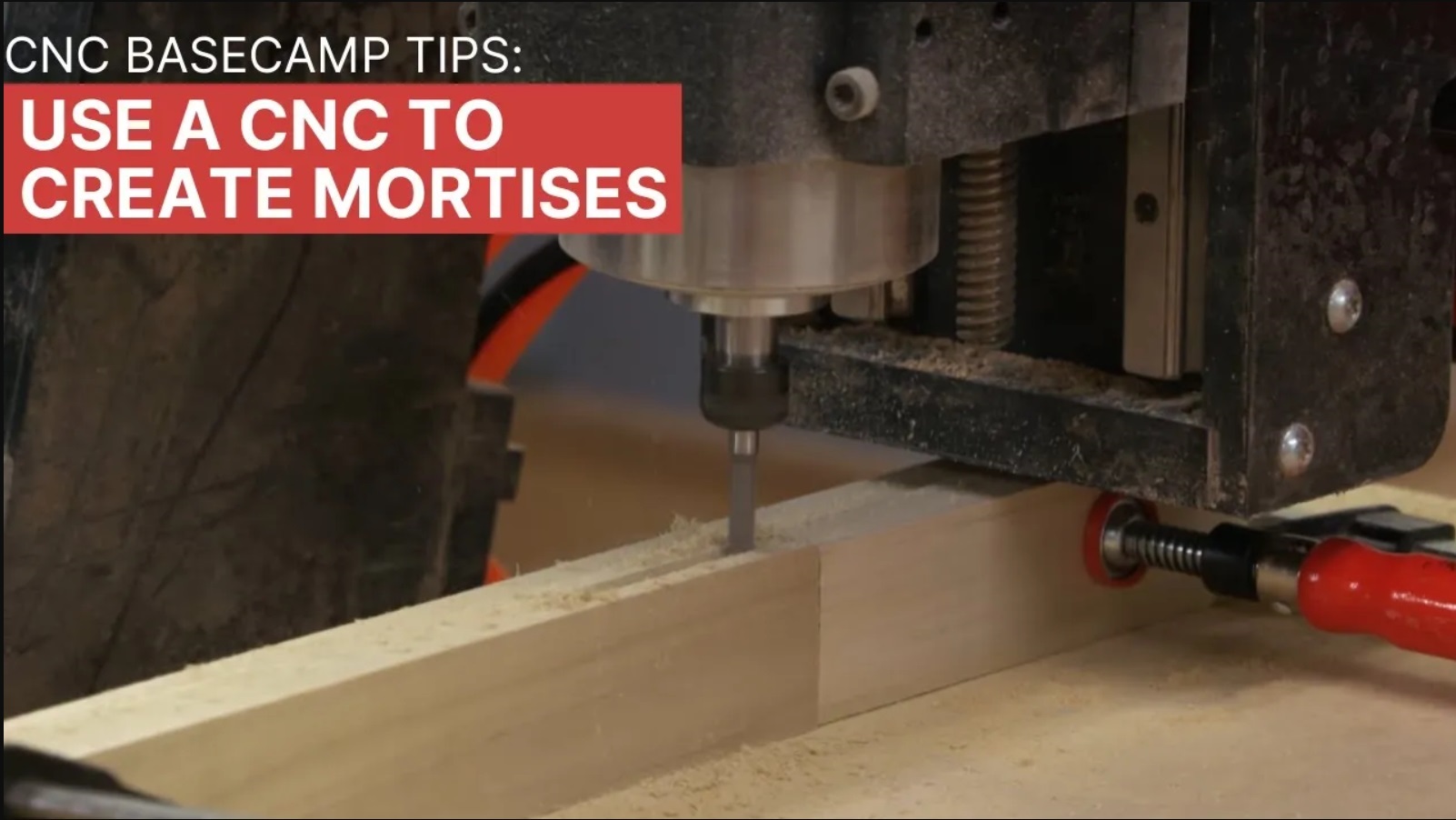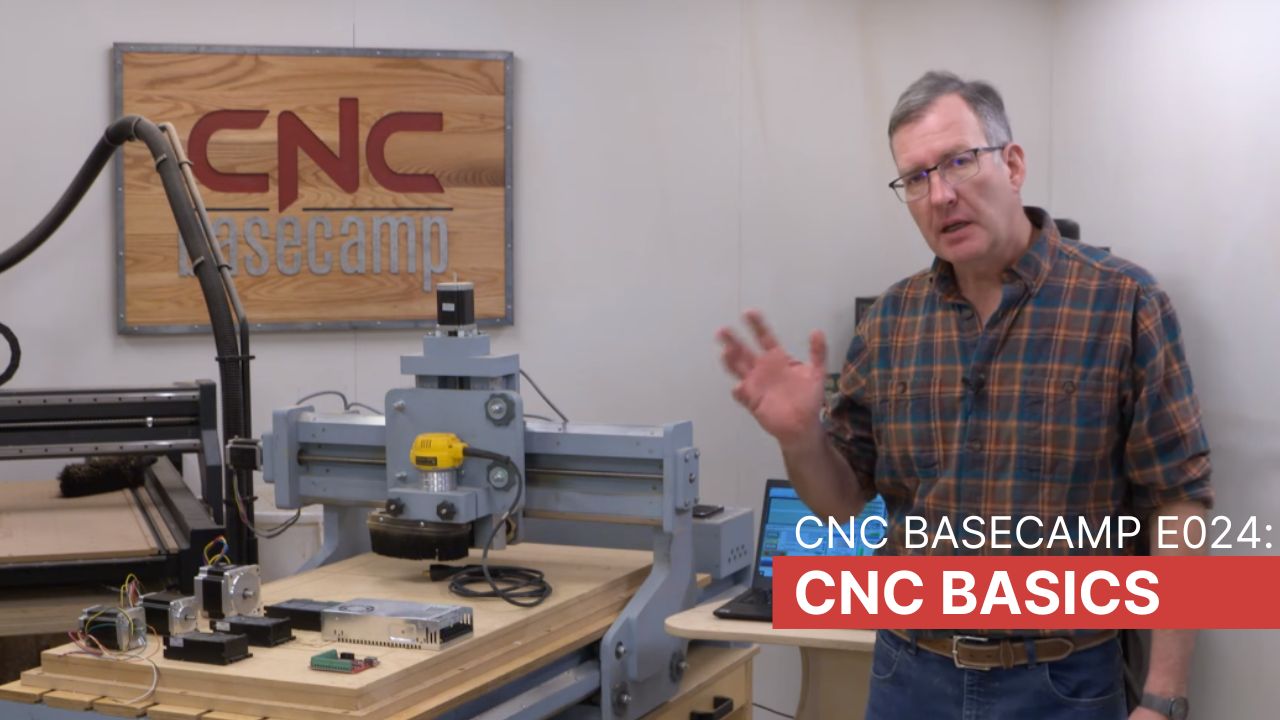There are many different alloys of aluminum. Each features a different combination of qualities. These are my three favorites:
6061 multi-purpose aluminum Commonly available in hardware stores this alloy has a yield strength of 40,000 lbs so it’s reasonably strong, has good corrosion resistance, good machinability, and fair formability. In other words, it’s a good all-around performer.
6063 architectural aluminum Softer than other alloys with a yield strength of 21,000 lbs. 6063 has good formability, machinability, and excellent corrosion resistance making it the right choice for fabricating exterior work.
7075 high strength aluminum Sometimes you need an aluminum alloy that’s tough, 7075 has a yield strength of 73,000 lbs. It has fair corrosion resistance, poor formability but excellent machinability.
Cutting Aluminum. Milling aluminum on your CNC router is not difficult if you follow a few rules:
- Use a single flute bit designed specifically for aluminum.
- Use a bit with the shortest LOC (length of cut) for cutting depth you are dealing with. Short bits are more rigid, giving better results and reducing breakage.
- Material lost to the kerf can really add up when cutting many parts side-by-side, so consider using 1/8” bit rather than a ¼” bit and get more parts out of your material. The smaller bits are also easier for small hobby machines with limited rigidity and power to handle.
- Take light cuts of no more than .03” per pass. Cutting dense materials like metal requires different parameters than cutting wood.
- Use a feed rate of 35-45 ipm for 1/8” bits and 45-60 ipm for 3/16” or 1/4” bits.
- Heat kills router bits. Period. Use lubrication to reduce friction and reduce heat. I like to use aerosol cans of lubricant specifically for milling.
- Keep the cutting kerf clean using vacuum or compressed air. Chip build-up breaks bits, and those bits are expensive! Be careful using compressed air and wear safety glasses.
Finishes. Aluminum can be brought to a mirror bright finish for a stunning look. The process is easy, but you do need to follow all the steps.
Begin by filing and sanding out any scratches. Aluminum oxide sandpaper works well just make sure to go through all of the grits ending with 360. Buffing begins with a course compound that has “cutting” ability. I find brown Tripoli works well. Final buffing is done with white or green rouge.
A soft looking finish is best for most work and is the easiest. Fine grit sandpaper with a random orbital sander takes care of flat surfaces, for more complex shapes there’s Scotch Brite pads. Scotch Brite pads are available in a number of grades. They can be used by hand or with random orbital sanders.
I love the silver glow of aluminum, but sometimes that is not what is needed. Patinas offer the answer. Available in a variety of colors such as brick red, black, gray-pewter, and brass-gold these finishes can be applied at room temperature with consistent success. All patina finishes need to be sealed with a clear coat. Solvent-based or water-based finishes work fine.
Aluminum is a great material that you can add to your workshop repertoire and opens up all sorts of possibilities for your projects. With aluminum you can mill repair brackets, create parts for exterior projects, make tools, create home décor and so much more – and you can do it all with your CNC router.













